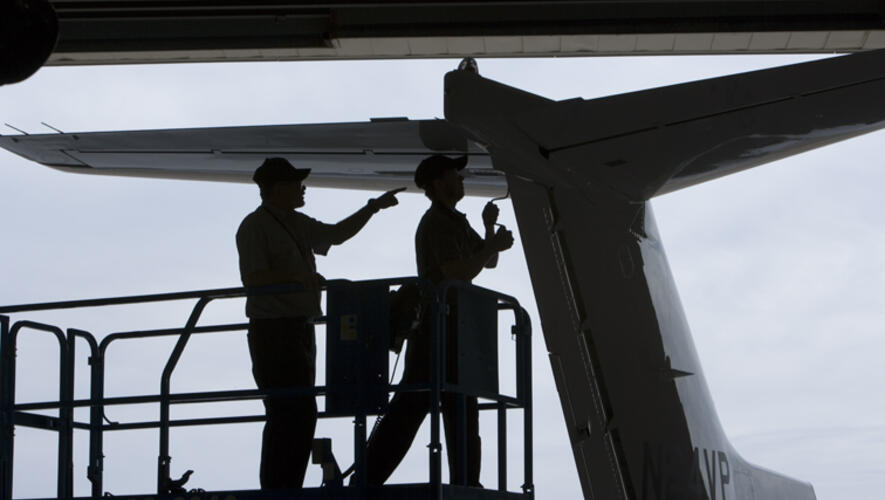
In business aviation, we’re often quick to discuss the soaring compensation of pilots and the shortage of talent. But behind the scenes, over in the maintenance sector, a crisis is quietly brewing.
As a recruiter, I’ve been closely monitoring compensation trends, and the latest numbers speak for themselves: compensation for maintenance technicians has increased by a mere 23 percent over the past seven years. Yet, over the same time period, pilot salaries have surged by a whopping 59 percent—more than double that of their maintenance counterparts.
Now, before anyone jumps to conclusions, it’s important to acknowledge that part of this wage disparity might be attributed to the number of job titles maintenance professionals have used over the years. Doing so makes it challenging to benchmark “technicians” to render any valid data. It’s clear that we need a better means of standardizing the data.
Overall, however, the implications of this wage gap are undeniable, and they extend far beyond mere numbers. They have the potential to create significant cultural issues within the industry, with the prevailing perception being that “it’s all about the pilots, while we’re getting our annual 3 percent.”
Surprising Survey Results
The data, attributed to Christopher Broyhill of Air Comp Calculator and sourced from the recent NBAA Compensation Survey, paint a concerning picture.
As previously noted, maintenance compensation has averaged an annual increase of just 3 percent—a rate insufficient to keep up with inflation. In fact, maintenance salaries even saw a decline–twice, in 2019 and 2022—further exacerbating the problem.
But let’s not merely focus on the grim statistics; let’s talk solutions. Recently, I reached out to several Part 91 directors of maintenance (DOMs) to discuss this very issue. I wanted to understand whether their compensation had improved and how the shortage of qualified technicians is impacting flight departments.
The responses were illuminating:
- 75 percent of DOMs reported that their technicians’ compensation had increased or significantly increased over the past two years.
- More than half are finding it difficult or very difficult to recruit maintenance talent.
- 33 percent are not affected by the maintenance technician shortage. However, 33 percent feel slightly or moderately affected and 33 percent feel significantly affected. Gratefully, no one surveyed feels severely affected.
The Maintenance Shortage
One critical challenge is the absence of a pipeline for the next generation of maintenance techs to enter business aviation. Recent graduates are flocking to the airlines instead, leaving a dearth of experienced technicians for business aviation organizations to hire.
A DOM who supports a family office pointed out, “There’s not a current pool of available experienced technicians. To replace an employee due to retirement, we’d likely have to pursue an established technician who is currently employed and convince them to join our organization.”
Another repercussion of this shortage is that maintenance departments are struggling to retain their workforce. Some are already witnessing competitors offering equal or better compensation packages. Meanwhile, at least one department we surveyed expects to lose five techs due to pending retirements in the coming years.
These scenarios are a wake-up call for the industry.
So, what are the strategies to attract and retain new talent? They can be pinpointed in five areas:
Culture. Prioritize creating a work environment that employees don’t want to leave. Focus on work-life balance, equity, cohesion, and other important elements of culture.
Internships. Consider hiring younger technicians or offering internships to nurture future talent.
Opportunity hires. Some organizations are proactively adding headcount before losing staff. Others are hiring additional mid-level techs to reduce the workload on a single aircraft tech.
Compensation. Involve HR in understanding the unique needs of the industry. Relying solely on salary surveys isn’t enough. Educate HR about the responsibilities and technical challenges technicians face daily.
Retention bonuses. Explore retention bonuses to incentivize experienced technicians to stay.
Bridging the Gap
At present, the conversation is shifting toward reevaluating job titles and compensation structures. Many maintenance leaders are closely collaborating with HR to re-grade technician positions to better align them with their responsibilities and technical challenges. The goal is to close the compensation gap.
Another DOM for a Fortune 100 company aptly said, “I hope some attention comes off the pilot crowd and gets refocused on maintenance, because the industry may find they have highly paid pilots sitting in grounded aircraft with no maintenance people to approve the aircraft for return to service.”
A lot of maintenance directors are trying to involve HR deeply, working on culture, increasing compensation, and expressing a willingness to hire talent earlier in their career.
Another Fortune 100 DOM concisely explained his strategy for attracting and retaining talent: “Create a desirable work culture with a progressive operating model, empowered team, competitive compensation and quality of life initiative.”
It’s time we recognize the indispensable role of contemporary maintenance technicians who are trying to solve these issues. The future of business aviation depends on them.
About the Author
Sheryl Barden, CAM, is the president and CEO of Aviation Personnel International, the longest-running recruiting and HR consulting firm exclusively serving business aviation. A thought leader on all things related to business aviation professionals, Barden is a former member of NBAA’s board of directors and its advisory council.
The opinions expressed in this column are those of the author and are not necessarily endorsed by AIN Media Group.
This article originally appeared in Aviation International News
